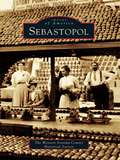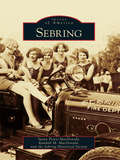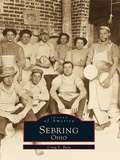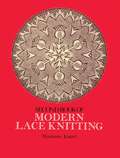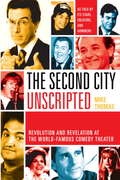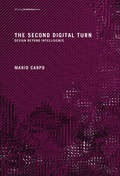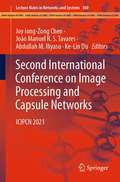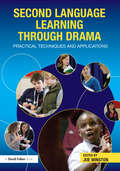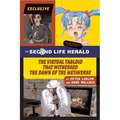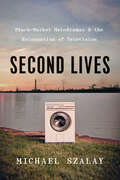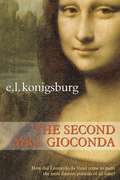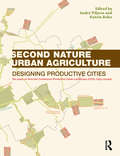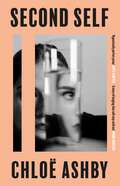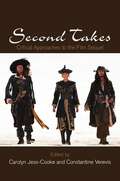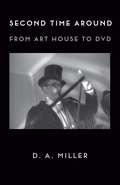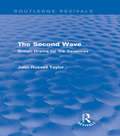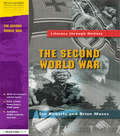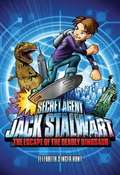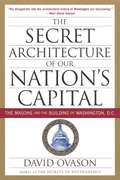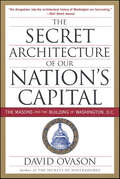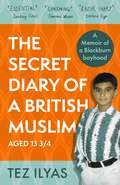- Table View
- List View
Sebastopol
by The Western Sonoma County Historical SocietySince the 1850s, the soothing countryside hamlets of Sonoma County have beckoned settlers of every stripe-farmers, homesteaders, businesspeople, and commuters. Sebastopol has always been among the county's loveliest towns, retaining its small-town feel even as its population has steadily grown. This book of vintage photography presents Sebastopol's journey through time, the early Mexican land grants and initial settlements, Luther Burbank's far-ranging botanical experiments, and the rich farming industry that made this town one of California's premier agricultural zones, producing grapes, hops, cherries, and dairy products. In these pages readers will experience Sebastopol's turn-of-the-century days at the Apple Fair, with its astonishing fruit sculptures. The first days of railroads are illustrated with images of the Petaluma & Santa Rosa Railway, an electric train system that took passengers to and from Sebastopol Depot. The architecture of the region and the stories of local businesses and institutions are all shown here, along with Sebastopol's early religious institutions, schools, sawmills, factories, and even its small airport in the 1920s. Together with views of the town's sporting teams, natural history, outlying communities, and important citizens, these photographs tell a unique story of a unique place that transcends the generations.
Sebring
by Sebring Historical Association Susan Priest Macdonald Randall M. MacdonaldIn 1911, Ohio entrepreneur George E. Sebring was drawn to the raw south-central Florida peninsular wilderness, known for bountiful fishing and game. After cofounding Sebring, Ohio, in 1898, he envisaged another eponymous town that would attract new residents to this largely unsettled area located 30 miles from the nearest railroad depot. The businessman purchased 9,000 acres on the shore of Lake Jackson, and his new town was designed and surveyed between October 1911 and April 1912. By virtue of its location along the Atlantic Coast Line Railroad, the community of Sebring emerged as a novel tourist and golfing destination and was established as the seat of newly formed Highlands County in 1921. Cultural and technological advances have transformed the once-rural community into a thriving modern city that today retains its small-town atmosphere as the City on the Circle.
Sebring, Ohio
by Craig S. BaraThe Sebring family came from the Netherlands and moved to Pennsylvania. George E. and Elizabeth Larkins Sebring eventually settled in East Liverpool, where they ran a grocery business and lived with their ten children. The Sebrings then decided to find property and build a pottery town, as they had been involved in potteries in East Liverpool and East Palestine. They settled on 200 acres of farmland near the Mahoning River, with the railroad running through the property. After a great deal of work in starting the new town, the Articles of Incorporation were filed in 1899. Potteries and homes were constructed, and Sebring became a flourishing town, at one point considered the pottery center of the world.
Second Book of Modern Lace Knitting
by Marianne KinzelKnitters who have mastered the designs in Marianne Kinzel's First Book of Modern Lace Knitting as well as needleworkers looking for distinctive knitted lace patterns and projects will welcome this second book by Mrs. Kinzel. The new designs include "Maidenhair," "Diamond," "Grand Slam" (a special feature for bridge players), "Arabesque," "La Traviata," "Maple Garland," "Lilac Time," "Trifolium," and a set of three of Mrs. Kinzel's noted floral patterns, "Daffodil," "Balmoral," and "Rose of England."Marianne Kinzel, well known to knitters in the United Kingdom and the United States, has long been admired for her clear presentations and original designs. In this second volume, she begins with basic instructions, allowing the average knitter to work easily from the instructions in the patterns. Other chapters outline many new designs in lace knitting for two needles, for knitting with wool, for oval and oblong designs, and for round designs. Over 29 complete projects include lace by the yard, altar lace, dress trimmings, tea cloths, scarves, stoles, dinner cloths, and cheval sets. Instructions are presented both in the traditional written-out method and in the chart-and-symbol method. There are keys to the charts in the three languages, lavish and helpful illustrations, and sound practical advice on knitting techniques plus finishing and laundering each piece. There are also instructions for altering the patterns to your own special needs.The designs in this book are among Marianne Kinzel's most requested. Amateur and professional knitters alike will note the extraordinary virtuosity underlying such a design as "Lilac Time," which can be adapted to so many different forms, and the contemporary appropriateness of such designs as "Grand Slam," "La Traviata," and the "Daffodil," "Balmoral," and "Rose of England." You will also find the projects comparatively short in time and low in cost to accomplish.
The Second City Unscripted: Revolution and Revelation at the World-Famous Comedy Theater
by Mike ThomasA comprehensive oral history of the nation's premier comedy theater--which launched the careers of legends John Belushi, Bill Murray, and Gilda Radner--this collection is published to coincide with the theater's 50th anniversary. 40 bw photos throughout.
The Second Digital Turn: Design Beyond Intelligence (Writing Architecture)
by Mario CarpoThe first digital turn in architecture changed our ways of making; the second changes our ways of thinking.Almost a generation ago, the early software for computer aided design and manufacturing (CAD/CAM) spawned a style of smooth and curving lines and surfaces that gave visible form to the first digital age, and left an indelible mark on contemporary architecture. But today's digitally intelligent architecture no longer looks that way. In The Second Digital Turn, Mario Carpo explains that this is because the design professions are now coming to terms with a new kind of digital tools they have adopted—no longer tools for making but tools for thinking. In the early 1990s the design professions were the first to intuit and interpret the new technical logic of the digital age: digital mass-customization (the use of digital tools to mass-produce variations at no extra cost) has already changed the way we produce and consume almost everything, and the same technology applied to commerce at large is now heralding a new society without scale—a flat marginal cost society where bigger markets will not make anything cheaper. But today, the unprecedented power of computation also favors a new kind of science where prediction can be based on sheer information retrieval, and form finding by simulation and optimization can replace deduction from mathematical formulas. Designers have been toying with machine thinking and machine learning for some time, and the apparently unfathomable complexity of the physical shapes they are now creating already expresses a new form of artificial intelligence, outside the tradition of modern science and alien to the organic logic of our mind.
Second International Conference on Image Processing and Capsule Networks: ICIPCN 2021 (Lecture Notes in Networks and Systems #300)
by Joy Iong-Zong Chen João Manuel R. S. Tavares Abdullah M. Iliyasu Ke-Lin DuThis book includes the papers presented in 2nd International Conference on Image Processing and Capsule Networks [ICIPCN 2021]. In this digital era, image processing plays a significant role in wide range of real-time applications like sensing, automation, health care, industries etc. Today, with many technological advances, many state-of-the-art techniques are integrated with image processing domain to enhance its adaptiveness, reliability, accuracy and efficiency. With the advent of intelligent technologies like machine learning especially deep learning, the imaging system can make decisions more and more accurately. Moreover, the application of deep learning will also help to identify the hidden information in volumetric images. Nevertheless, capsule network, a type of deep neural network, is revolutionizing the image processing domain; it is still in a research and development phase. In this perspective, this book includes the state-of-the-art research works that integrate intelligent techniques with image processing models, and also, it reports the recent advancements in image processing techniques. Also, this book includes the novel tools and techniques for deploying real-time image processing applications.The chapters will briefly discuss about the intelligent image processing technologies, which leverage an authoritative and detailed representation by delivering an enhanced image and video recognition and adaptive processing mechanisms, which may clearly define the image and the family of image processing techniques and applications that are closely related to the humanistic way of thinking.
Second Language Learning through Drama: Practical Techniques and Applications
by Joe WinstonDrama is increasingly being recognised as a valuable pedagogy for language learning as it can harness children‘s imaginations and stimulate their desire to communicate. Second Learning Language through Drama draws on current theories of additional and foreign language learning and illustrates through practical case studies how drama can be used to support the four key skills of listening, speaking, reading and writing. Drawing on the work of an international group of practitioners who are all highly experienced in using drama for the purpose of second language learning, the book clearly explains key drama conventions and strategies and outlines the innovative ways they have been used to create enjoyable and stimulating classroom activities that allow for multiple ways of learning. Throughout the book the emphasis is on making language learning accessible and relevant to children and young people through creative, physically active and playful approaches. The strategies described are all highly flexible and readily adaptable to different teaching contexts. Specific themes include: Using stories and drama to motivate learners at all levels Drama, language learning and identity Assessment opportunities through process drama Issues of language learning and cultural empowerment Digital storytelling Film & drama aesthetics Second Language Learning through Drama will be of great interest to those studying on undergraduate and postgraduate courses and will serve as a highly valuable text to practitioners looking to incorporate the approaches described into their lessons and classroom activities.
The Second Life Herald: The Virtual Tabloid That Witnessed the Dawn of the Metaverse
by Peter Ludlow Mark WallaceLudlow and Wallace take us behind the scenes of the Herald as they report on the emergence of a fascinating universe of virtual spaces that will become the next generation of the World Wide Web: a 3-D environment that provides richer, more expressive interactions than the Web we know today.
Second Lives: Black-Market Melodramas and the Reinvention of Television
by Michael SzalayA history of prestige television through the rise of the “black-market melodrama.” In Second Lives, Michael Szalay defines a new television genre that has driven the breathtaking ascent of TV as a cultural force over the last two decades: the black-market melodrama. Exemplified by the likes of The Sopranos and Breaking Bad, the genre moves between a family’s everyday life and its secret second life, which may involve illegal business, espionage, or even an alternate reality. Second lives allow characters (and audiences) to escape what feels like endless work into a revanchist vision of the white middle class family. But there is for this grimly resigned genre no meaningful way back to the Fordist family wage for which it longs. In fact, Szalay argues, black-market melodramas lament the very economic transformations that untethered TV viewing from the daily rhythms of the nine-to-five job and led, ultimately, to prestige TV.
Second Lives: Black-Market Melodramas and the Reinvention of Television
by Michael SzalayA history of prestige television through the rise of the “black-market melodrama.” In Second Lives, Michael Szalay defines a new television genre that has driven the breathtaking ascent of TV as a cultural force over the last two decades: the black-market melodrama. Exemplified by the likes of The Sopranos and Breaking Bad, the genre moves between a family’s everyday life and its secret second life, which may involve illegal business, espionage, or even an alternate reality. Second lives allow characters (and audiences) to escape what feels like endless work into a revanchist vision of the white middle class family. But there is for this grimly resigned genre no meaningful way back to the Fordist family wage for which it longs. In fact, Szalay argues, black-market melodramas lament the very economic transformations that untethered TV viewing from the daily rhythms of the nine-to-five job and led, ultimately, to prestige TV.
Second Lives: Black-Market Melodramas and the Reinvention of Television
by Michael SzalayA history of prestige television through the rise of the “black-market melodrama.” In Second Lives, Michael Szalay defines a new television genre that has driven the breathtaking ascent of TV as a cultural force over the last two decades: the black-market melodrama. Exemplified by the likes of The Sopranos and Breaking Bad, the genre moves between a family’s everyday life and its secret second life, which may involve illegal business, espionage, or even an alternate reality. Second lives allow characters (and audiences) to escape what feels like endless work into a revanchist vision of the white middle class family. But there is for this grimly resigned genre no meaningful way back to the Fordist family wage for which it longs. In fact, Szalay argues, black-market melodramas lament the very economic transformations that untethered TV viewing from the daily rhythms of the nine-to-five job and led, ultimately, to prestige TV.
The Second Mrs. Giaconda
by E. L. KonigsburgWhy did Leonardo da Vinci lavish three years on painting the second wife of an unimportant merchant when all the nobles of Europe were begging for a portrait by his hand? In E. L. Konigsburg's intriguing novel, the answer lies with the complex relationship between the genius, his morally questionable young apprentice, and a young duchess whose plain features belie the sensitivity of her soul.
Second Nature Urban Agriculture: Designing Productive Cities
by André Viljoen Katrin BohnWinner of the 2015 RIBA President's Award for Outstanding University Located Research This book is the long awaited sequel to "Continuous Productive Urban Landscapes: Designing Urban Agriculture for Sustainable Cities". "Second Nature Urban Agriculture" updates and extends the authors' concept for introducing productive urban landscapes, including urban agriculture, into cities as essential elements of sustainable urban infrastructure. It reviews recent research and projects on the subject and presents concrete actions aimed at making urban agriculture happen. As pioneering thinkers in this area, the authors bring a unique overview to contemporary developments and have the experience to judge opportunities and challenges facing those who wish to create more equitable, resilient, desirable and beautiful cities.
Second Self
by Chloë Ashby'Almost hypnotically perfect prose' Kate Sawyer | 'A thoughtful, tender and delicate consideration of life's choices' Huma Qureshi | 'Ashby handles her material lightly and atmospherically' Rowan Hisayo BuchananWhen Cathy and Noah first got together neither saw children in their future. Eight years later, they're happily married - and Cathy isn't so sure. With Noah's patience for his wife's ambivalence waning, her widowed mother in a world of her own and her best friend yearning for a second baby, Cathy feels increasingly adrift.Escaping into her work in the conservation studios of the National Gallery, she chips away at the layers of overpaint on a canvas from the collection. Will the discovery of an unexpected truth help her find the clarity she craves?SECOND SELF is a novel about confronting expectations, and learning to cope with the nagging, complex questions that shape a life. It's about minds and bodies at the mercy of natural forces and social pressure. Above all, it's an ode to big decisions, small, tender moments, and how we choose to be. This absorbing second novel from the author of WET PAINT is perfect for fans of EXPECTATION and SORROW AND BLISS.
Second Site (POINT: Essays on Architecture #4)
by James NisbetA meditation on how environmental change and the passage of time transform the meaning of site-specific artIn the decades after World War II, artists and designers of the land art movement used the natural landscape to create monumental site-specific artworks. Second Site offers a powerful meditation on how environmental change and the passage of time alter and transform the meanings—and sometimes appearances—of works created to inhabit a specific place.James Nisbet offers fresh approaches to well-known artworks by Ant Farm, Rebecca Belmore, Nancy Holt, Richard Serra, and Robert Smithson. He also examines the work of less recognized artists such as Agnes Denes, Bonnie Devine, and herman de vries. Nisbet tracks the vicissitudes wrought by climate change and urban development on site-specific artworks, taking readers from the plains of Amarillo, Texas, to a field of volcanic rock in Mexico City, to abandoned quarries in Finland.Providing vital perspectives on what it means to endure in an ecologically volatile world, Second Site challenges long-held beliefs about the permanency of site-based art, with implications for the understanding and conservation of artistic creation and cultural heritage.
Second Takes: Critical Approaches to the Film Sequel (SUNY series, Horizons of Cinema)
by Carolyn Jess-Cooke Constantine VerevisSequels, serials, and remakes have been a staple of cinema since the very beginning, and recent years have seen the emergence of dynamic and progressive variations of these multi-film franchises. Taking a broad range of sequels as case studies, from the Godfather movies to the Pirates of the Caribbean franchise, Second Takes confronts the complications posed by film sequels and their aftermaths, proposing new critical approaches to what has become a dominant industrial mode of Hollywood cinema. The contributors explore the sequel's investments in repetition, difference, continuation, and retroactivity, and particularly those attitudes and approaches toward the sequel that hold it up as a kind of figurehead of Hollywood's commercial imperatives. An invaluable resource to the film student, critic, and fan, Second Takes offers new ways of looking at the film sequel's industrial, aesthetic, cultural, political, and theoretical contexts.
Second Time Around: From Art House to DVD
by D. A. MillerThe art houses and cinema clubs of his youth are gone, but the films that D. A. Miller discovered there in the 1960s and ’70s are now at his fingertips. With DVDs and streaming media, technology has turned the old cinematheque’s theatrical offerings into private viewings that anyone can repeat, pause, slow, and otherwise manipulate at will.In Second Time Around, Miller seizes this opportunity; across thirteen essays, he watches digitally restored films by directors from Mizoguchi to Pasolini and from Hitchcock to Honda, looking to find not only what he first saw in them but also what he was then kept from seeing by quick camerawork, normal projection speed, missing frames, or simple censorship. At last he has an unobstructed view of the gay leather scene in Cruising, the expurgated special effects in The H-Man, and the alternative ending to Vertigo. Now he can pursue the finer details of Chabrol’s debt to Hitchcock, Visconti’s mystificatory Marxism, or the unemotive emotion in Godard.Yet this recaptured past is strangely disturbing; the films and the author have changed in too many ways for their reunion to be like old times. The closeness of Miller’s attention clarifies the painful contradictions of youth and decline, damaged prints and flawless restorations.
The Second Wave: British Drama for the Seventies (Routledge Revivals)
by John Russell TaylorIn the 1970s the revolution that had swept the British theatre in the 1950s had already become accepted as the new establishment. Areas that had been previously regarded as remote ideals - including permanent repertory companies, a lively provincial theatre and an extensive spread of avant-garde and fringe theatrical activities - were now considered commonplace. In this title, first published in 1971, John Russell Taylor assesses the prospects of the British theatre at the start of the 1970s and indicates its points of weakness and its strengths. In this context are placed the key figures among the Second Wave of dramatists, and detailed critical commentaries on the work of writers such as David Mercer, Tom Stoppard and Peter Terson. This is an indispensable introduction for any student with an interest in the history and development of the British theatre and the people who have played instrumental roles in this.
The Second World War: The Second World War
by Ian Roberts Brian MosesThis book will support children as they: * Find out about wartime phrases and use them to write a dialogue * Write a letter home from a P.O.W. camp * Read wartime adverts and slogans and decide how effective they are
Secret Agent Jack Stalwart Book 1: USA
by Elizabeth Singer HuntIn this action-packed new series, nine-year old secret agent Jack Stalwarttravels the globe in search of his missing older brother Max while solvinginternational crimes for the Global Protection Force. In The Escape of the Deadly Dinosaur, Jack zooms to New York City from his home in England, to try to solve the mystery of the missing Allosaurus toe. Starting at the Natural History Museum, Jack's detection takes him to a competitive grade-schooler determined to win the science fair with his experiment crossing his own dog with the DNA from the bone of a dangerous, carnivorous dinosaur. Soon the gargantuan creature is terrorizing New Yorkers and Jack must stop him before he devours the animals in the Central Park zoo! [Proofreader's Note: This series is an early chapter book for younger children, with many illustrations. As the illustrations only show what the story tells, they were not described.]
The Secret Architecture of Our Nation's Capital: The Masons and the Building of Washington, D. C.
by David OvasonToday, there are more than twenty complete zodiacs in Washington, D.C.-- each one pointing to an extraordinary mystery. David Ovason, who has studied these astrological devices for ten years, now reveals why they have been placed in such abundance in the center of our nation's capital and explains their interconnections. His richly illustrated text tells the story of how Washington, from its foundation in 1791, was linked with the zodiac, with the meaning of certain stars, and with a hidden cosmological symbolism that he uncovers here for the first time. Fascinating and thoroughly researched, The Secret Architecture of Our Nation's Capital is an engrossing book that raises provocative questions and offers complex insights into the meanings behind the mysterious symbols in Washington. David Ovason has spent more than a decade researching the architecture and zodiacs of Washington, D.C. He teaches astrology and has studied the life and writings of Nostradamus for more than forty years. He is the author of several books, including The Secrets of Nostradamus and Nostradamus: Prophecies for America. Mr. Ovason lives and works in England.
The Secret Architecture of Our Nation's Capital: The Masons and the Building of Washington, D.C.
by David OvasonToday, there are more than twenty complete zodiacs in Washington, D.C., each one pointing to an extraordinary mystery. David Ovason, who has studied these astrological devices for ten years, now reveals why they have been placed in such abundance in the center of our nation's capital and explains their interconnections. His richly illustrated text tells the story of how Washington, from its foundation in 1791, was linked with the zodiac, with the meaning of certain stars, and with a hidden cosmological symbolism that he uncovers here for the first time.Fascinating and thoroughly researched, The Secret Architecture of Our Nation 's Capital is an engrossing book that raises provocative questions and otters complex insights into the meanings behind the mysterious symbols in Washington.
The Secret Diary of a British Muslim Aged 13 3/4
by Tez Ilyas'Essential...A complex blend of overexcited Adrian Mole-like anecdotes mixed with shocking moments of racism and insights into Muslim religious practices' Sunday TimesThe hilarious and pubescent debut book from your favourite British Muslim comedian (that's Tez Ilyas, by the way) is coming to a shop near you. You may know and love Tez from his stand-up comedy, his role as Eight in Man Like Mobeen, his Radio 4 series TEZ Talks, or panel shows such as Mock the Week and The Last Leg. Where you won't know him from is 1997 when he was 13 ¾. (But now you will - because that's what the book is about.) In this suitably dramatic rollercoaster of a teenage memoir, Tez takes us back to where it all began: a working class, insular British Asian Muslim community in his hometown of post-Thatcher Blackburn. Meet Ammi (Mum), Baji Rosey (the older sister), Shibz (the fashionable cousin), Was (the cool cousin), Shiry (the cleverest cousin) and a community with the most creative nicknames this side of Top Gun.Running away from shotgun-wielding farmers, successfully dodging arranged marriages, getting mugged, having front row seats to race riots and achieving formative sexual experiences doing stomach crunches in a gym, you could say life was fairly run of the mill. But with a GCSE pass rate of 30% at his school, his own fair share of family tragedy around the corner and 9/11 on the horizon, Tez's experiences of growing up as a British Muslim wasn't the fun, Jihad-pursuing affair the media wants you to believe. Well ... not always.At times shalwar-wettingly hilarious and at others searingly sad, The Secret Diary of a British Muslim Aged 13¾ shows 90s Britain at its best, and its worst.
The Secret Diary of a British Muslim Aged 13 3/4
by Tez IlyasThe hilarious and pubescent debut book from your favourite British Muslim comedian (that's Tez Ilyas, by the way) is coming to a shop near you. You may know and love Tez from his stand-up comedy, his role as Eight in Man Like Mobeen, his Radio 4 series TEZ Talks, or panel shows such as Mock the Week and The Last Leg. Where you won't know him from is 1997 when he was 13 ¾. (But now you will - because that's what the book is about.) In this suitably dramatic rollercoaster of a teenage memoir, Tez takes us back to where it all began: a working class, insular British Asian Muslim community in his hometown of post-Thatcher Blackburn. Meet Ammi (Mum), Baji Rosey (the older sister), Shibz (the fashionable cousin), Was (the cool cousin), Shiry (the cleverest cousin) and a community with the most creative nicknames this side of Top Gun.Running away from shotgun-wielding farmers, successfully dodging arranged marriages, getting mugged, having front row seats to race riots and achieving formative sexual experiences doing stomach crunches in a gym, you could say life was fairly run of the mill. But with a GCSE pass rate of 30% at his school, his own fair share of family tragedy around the corner and 9/11 on the horizon, Tez's experiences of growing up as a British Muslim wasn't the fun, Jihad-pursuing affair the media wants you to believe. Well ... not always.At times shalwar-wettingly hilarious and at others searingly sad, The Secret Diary of a British Muslim Aged 13¾ shows 90s Britain at its best, and its worst.
